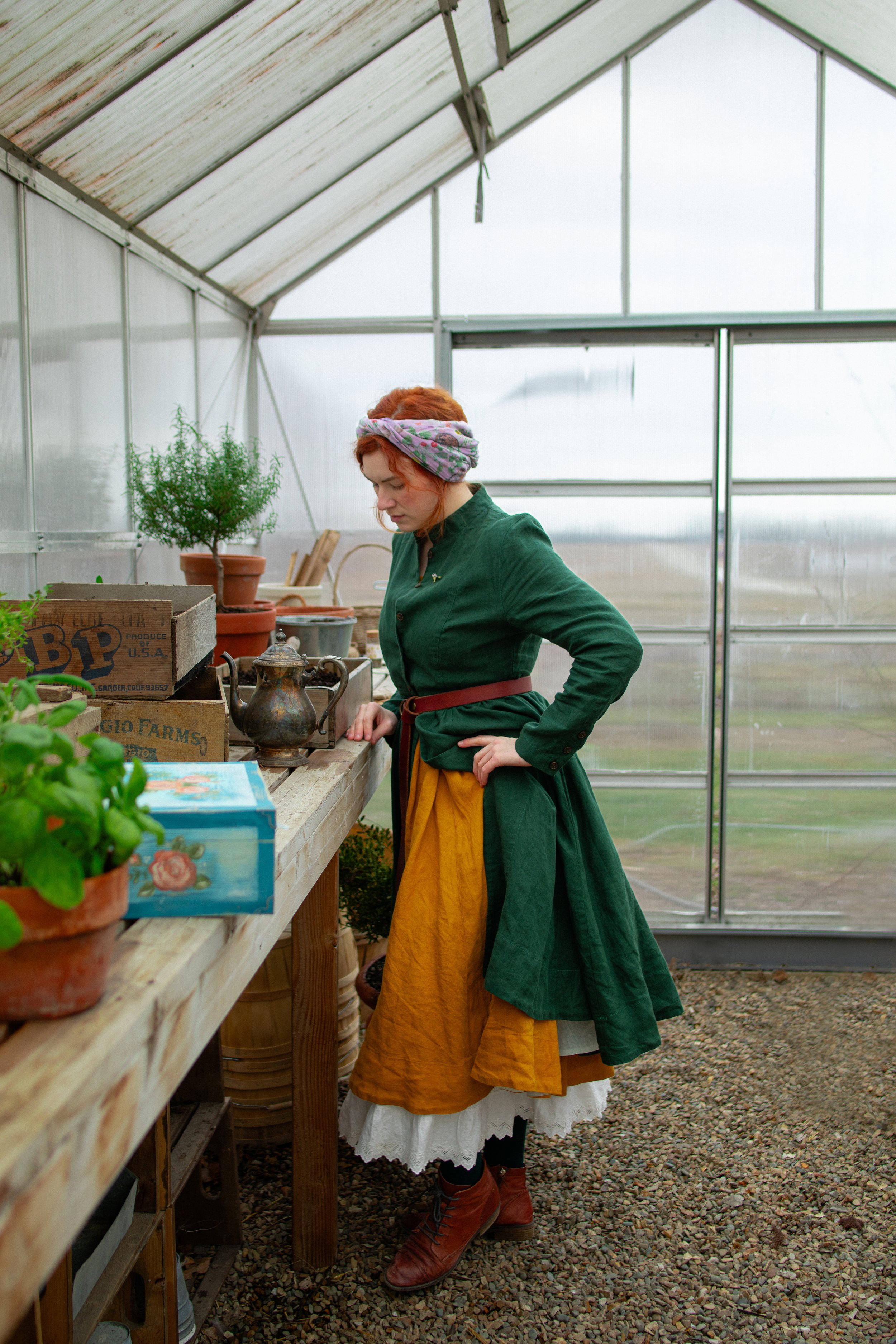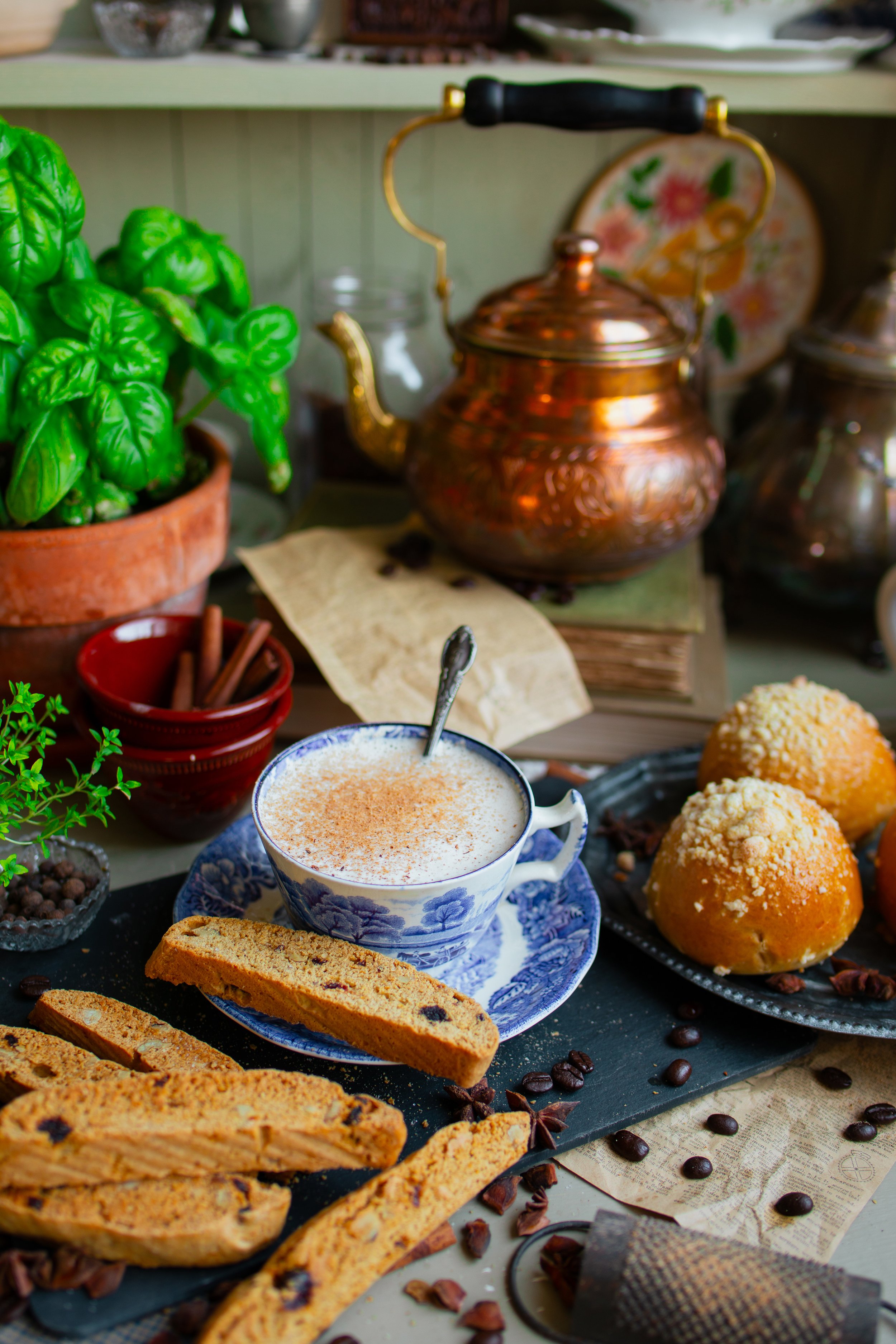A Guide to Pretty and Sustainable Seed Starting Supplies: Making a Magical Garden
This post may contain affiliate links, please see our privacy policy for more information.
The season for starting seeds has arrived, Dear Reader! Another gardening season is upon us here in Iowa. When does the gardening season begin for you? In this guide, I am thrilled to share with you some of my favorite simple and affordable seed starting supplies. Not only are they these things, but they are also pretty! While I do not believe that you need to have beautiful seed starting supplies to start your garden, I thoroughly enjoy romanticizing my life and home and finding unique ways to both start seeds and collect aesthetically pleasing seed starting supplies. I hope that you enjoy seeing some of these seed starting supplies and find some new inspiration!
on romanticizing your garden:
I truly have found over the last decade of gardening (and blogging about it - though I did take a break for the last few years!) that any of the seed starting supplies I have gathered has worked, and it has fulfilled its purpose to successfully grow seeds and then be transplanted into my garden. Not all of those supplies were pretty. That’s okay! This guide is not meant to tell you that these ideas and products are better in any way.
However, over the years, what has really made gardening magical for me and motivated me to continue on planting each year is by making the mess I’m surrounded with beautiful. I am a neurodivergent individual with ADHD and autism, which means I tend to create lots of mess and have difficulty starting tasks that I’m not interested in. Romanticizing my life, and my garden, has saved me in many ways. I am more ambitious about working on seed starting (a task that I personally find incredibly boring) when I feel like I am in a cozy space.
on seed starting with a budget:
The beauty of using more aesthetically pleasing seed starting tools is that you most likely already have these tools in your home. I began changing over my seed starting supplies in the spring of 2021. I had just visited Colonial Williamsburg, and I was full of inspiration after seeing the historical gardening methods from the 18th century.
If you are new to my blog, you might not know that I was a market gardener for a short time. We grew vegetables and flowers on a 1 acre plot that we would sell at farmer’s markets and in a CSA program. I was fully invested in seed starting like a professional with all of the specialty equipment. It was incredibly overwhelming.
After seeing how the seeds were started in Colonial Williamsburg, I realized that there was so much I had not considered and was feeling incredibly narrow-minded. It didn’t help that there was not a lot of information out there about starting seeds any other way than using black plastic pots and trays! Before there were plastic seed starting supplies, what did people use? Well… whatever they had in their home!
getting creative with unexpected tools:
To create beautiful and sustainable seed starting supplies, first you have to re-consider what you can use as tools. Many tools, I realized, were rather unexpected. I didn’t need fancy trays and plastic domes, though those things are nice if you are growing acres and acres of crops! Now that we grow a personal sized garden, I have a lot more fun with my seed starting by using all sorts of various containers that I have collected from around our home or at the thrift store.
Clay Pots. While not necessarily a common household item, clay pots come in all sorts of sizes. In Colonial Williamsburg, they use teeny tiny 1-inch and 2-inch terracotta pots to start all of their seeds. I loved how precious this looked all tucked away in a covered raised bed.
Paper Pots. Paper pots are incredibly easy to make and can be made from recycled paper. Newspaper works great for paper pots, or even your paper grocery bags! I have tutorial for making paper pots here.
Tin Cans. Instead of recycling your tin cans, keep them to create little planters to start your seeds. You can easily poke holes in the bottom and sides of tin cans for water drainage. This is fun to make pretty designs like a pioneer!
Baking Pans. Next time you are out thrifting, start collecting old baking pans. These work great for planting bulk trays or using to hold your smaller pots. If you do plan to use it as a bulk planting tray just be sure to be careful with drainage.
Wooden Crates. My new favorite tools for bulk planting (where I fill up the entire tray with potting soil and then cut my own “soil blocks”) are wooden crates. They have great drainage and will eventually become compostable. For added protection from water damage to have them last a little longer, I line the bottom with excess weed barrier fabric.
Glass Jars & Cups. Instead of using a plastic dome, why not try a glass jar? Flipped upside down and placed over your terracotta pot, they make excellent humidity domes to hold in the moisture before your little plant sprouts!
Cake Domes. Just like a glass jar, cake domes make excellent humidity domes as well for multiple plant starts.
tools that I have purchased & love:
Even though many of the seed starting supplies I use nowadays are just random objects from around my home, there are a handful of tools that I have purchased and absolutely loved! You might also enjoy these pretty seed starting supplies and seed starting setups as well.
Paper Pot Maker. You certainly don’t need this tool to make paper pots, but it is rather helpful and it’s affordable. I have had mine for years, and I love it for starting plants that don’t like to have their roots disturbed.
Weed Barrier Fabric. I love weed barrier fabric. It has helped me in the garden many times, especially when we were growing bulk vegetables. Today, for our hobby farm, we mainly use it when we plant our pumpkin patch!
Peat Pots. If you don’t want to make your own, there are pre-formed pots that you can purchase that compost in ground as your plant grows all gardening season long.
Dibber. This tool is great for measuring planting depth as a new gardener! However, I usually just use a pencil to make little divots in the soil to plant each seed.
Wooden Plant Labels. I prefer wooden planting labels over any other kind.
Galvanized Seed Starting Tray. This is a more fancy reusable planting tray. I have one that is an off-brand and more affordable, but they don’t appear to sell it anymore. This is a cute option, but mine does get a bit rusty!
making your own supplies:
Now that you’ve seen all of the options, perhaps you are considering adding your own unique twist on your seed starting setup? As artists, my mom and I love putting our individual mark on our home and garden! My mom designed these adorable seed packets to keep our seeds in as well as to use for gifting our garden seeds to friends and neighbors.
Another item that we added this year was this beautiful painted seed box. The box is a simple wooden hinged box that you can purchase at a crafting or hobby store. She painted it to look like a Scandinavian tine box!
finding inspiration:
There is endless inspiration if you know where to look! Personally, I tend to look towards history and my ancestry for inspiration time and again. There are so many things about my heritage that I know very little about because I did not have any of those cultural traditions passed down to me.
I wrote about Swedish tine boxes in my post about replicating the Kirsten American Doll’s tine box from the doll’s craft book. These were wooden boxes that were most commonly found in Sweden and Norway. They were the primary choice for storage or travel and were always painted with nature scenes, like flowers and animals. The more I learn about Scandinavian heritage as well as my Eastern European heritage, the more I fall in love with how everything was so beautifully painted. After many years of white on white on white decor, this is a glorious change!
final thoughts:
Whether you have a small or larger budget, you can use and create pretty and sustainable seed starting supplies with a little bit of imagination! I love finding unique ways to plant things. Sometimes they work out and other time they don’t. That is the beauty of learning each and every year!
I hope that this seed starting supplies guide gives you some new ideas to romanticize your own seed starting setup. Life is all about the little things. If you have the ability to make something lovely, why not give it a try?
xoxo Kayla
shop my look:
My head scarf and bird brooch are gifts from Fable England.
My coat and dress are gifts from the new Son de Flor Spring/Summer 2024 collection.
My leather belt is a gift from Frost & Ember Creations.














